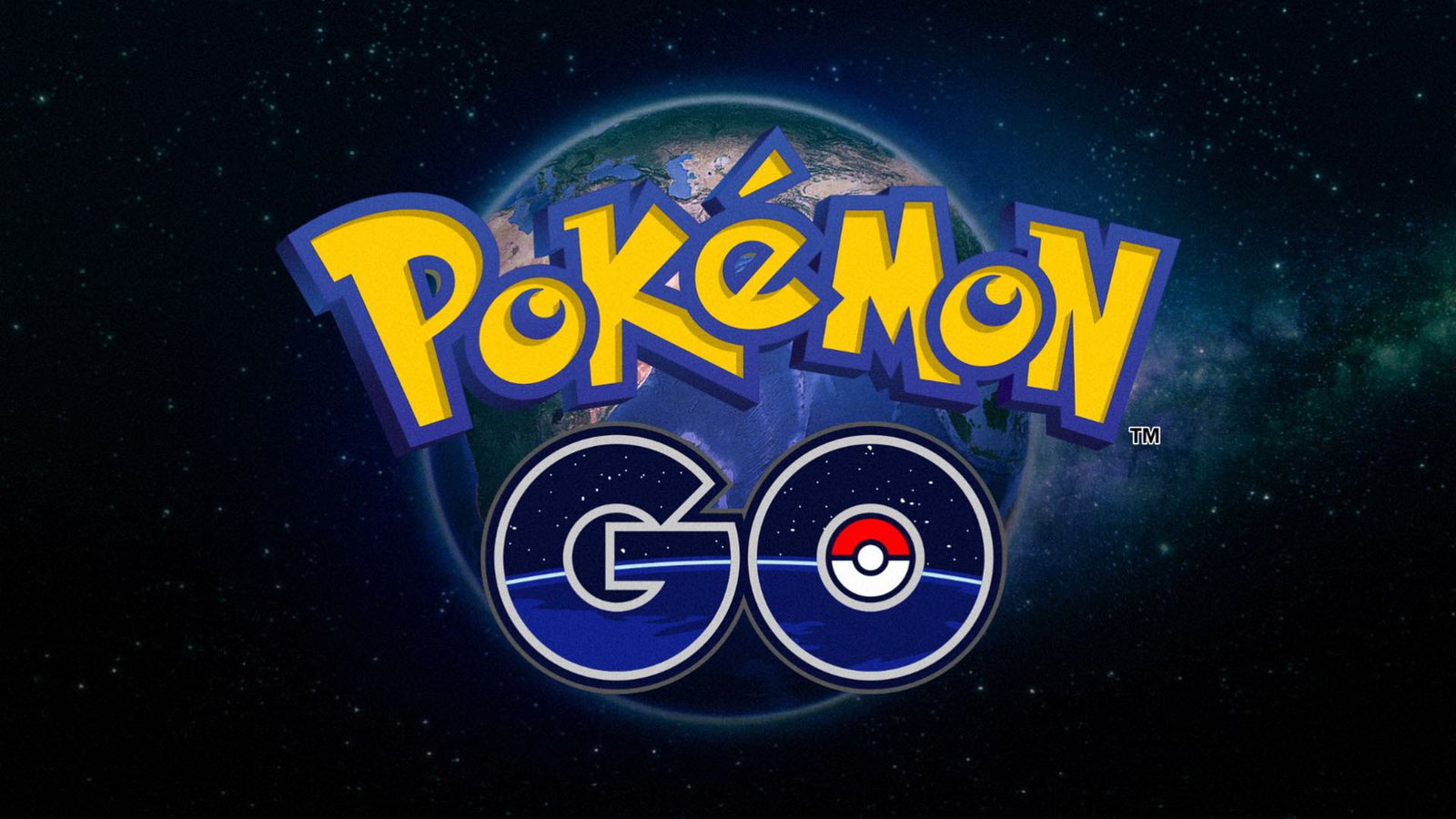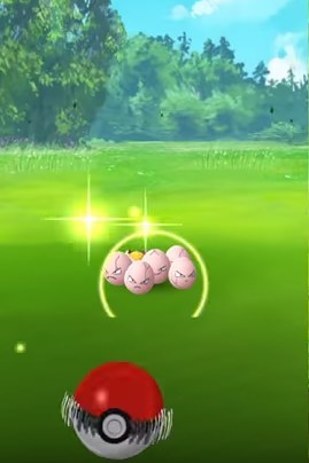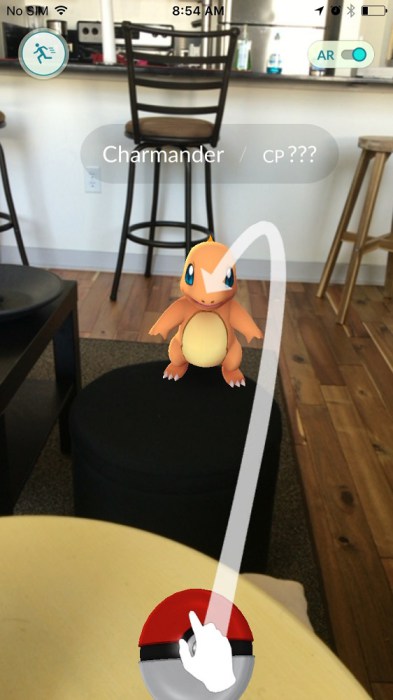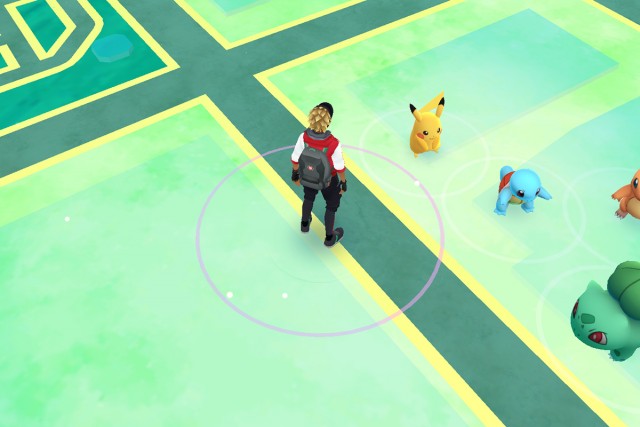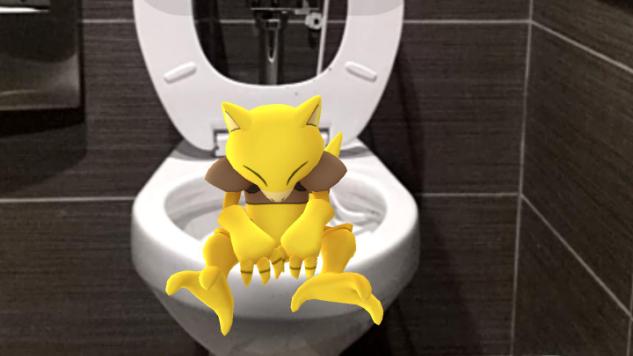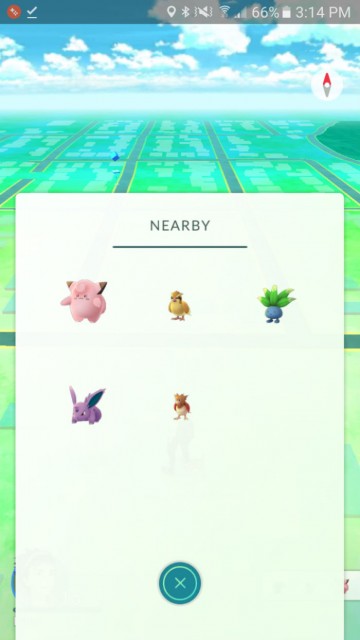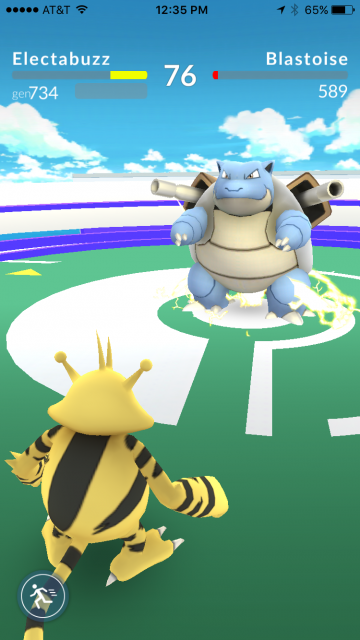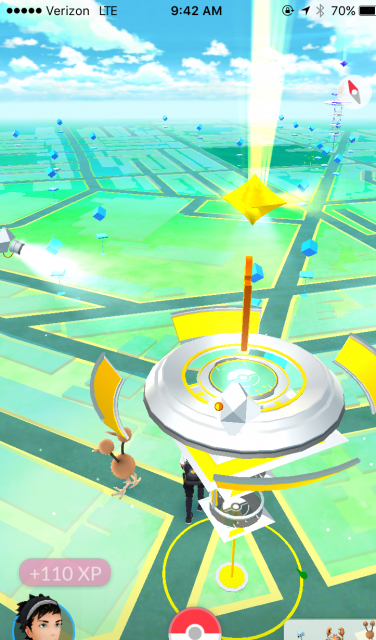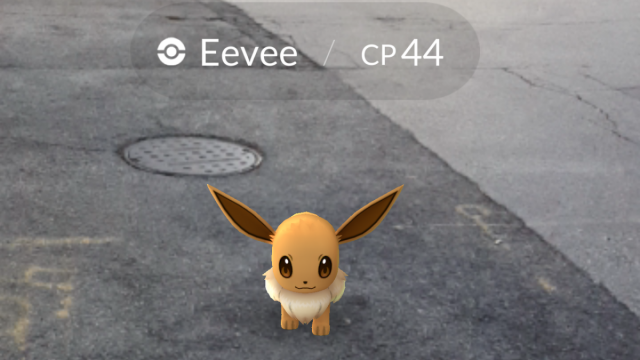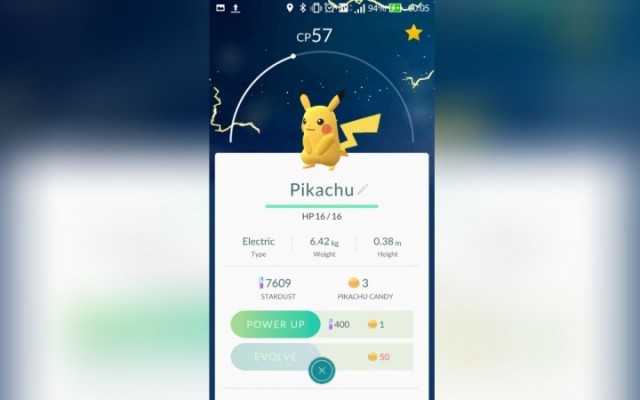Pokemon GO has positively taken the world by storm! It’s single-handedly upped Pokemon fever worldwide to the point of putting it back in mainstream news again, let alone gaming news, and it also represents the biggest recorded step forward in the growing realm of augmented reality-based gaming. Pokemon GO is also Nintendo’s first proper offering made for the mobile market, succeeding their social app, Miitomo, even though much of the game’s features and continued development are exclusively handled by The Pokemon Company, and the game’s developer, Niantic Labs.
As much as many people like, love and even actively obsess over Pokemon GO in many regions across the globe at this point, now that the game has been made available in most major regions following a soft launch in the U.S. and parts of Europe, which then extended to Canada, Japan, other parts of Asia, and will soon include South America, Pokemon GO has also been met with some controversy. Some of said controversy is about questionable players doing silly or outright dangerous things in the name of chasing imaginary pocket monsters, of course, but that’s not all. A lot of controversy has also surrounded Pokemon GO’s tendency to be, well, kind of glitchy at the best of times, and outright broken at worst. This may not be surprising to some, considering the huge ambition of a real-life Pokemon experience borne from your iOS or Android smartphone, but it has begged the question of whether Pokemon GO, colossal popularity notwithstanding, is genuinely a, “Good” game, especially considering that most games made for mobile devices are widely disliked by the gaming community.
Whether or not Pokemon GO is a good, worthwhile gaming experience does somewhat depend on your definition. The game sheds about 90% of the depth from even the Pokemon series’ original Game Boy offerings, let alone the more recent cutting-edge Pokemon games made for Nintendo 3DS, though this does open the experience up to those who have somehow avoided ever touching a piece of Pokemon media beforehand. It’s also difficult to argue with the prospect of a game that effectively encourages children and adults alike to go outside, socialize, embrace the community around them, and even do things as bold as stop active crimes! Pokemon GO, for all of its flaws and occasional idiot users that land in the news headlines, is definitely a net positive for the worldwide community, and is definitely a rewarding game that deserves a try from pretty much anyone, especially since it’s a free-to-play mobile game, and doesn’t cost anything up front to download and play!
So how does one play Pokemon GO? After designing the appearance, gender and name of your custom Pokemon trainer avatar (the customization options aren’t hugely substantial, but they’re good enough), and going through a quick tutorial, you can then start wandering around your real-world area, with GPS trackers indicating when Pokemon are nearby. This tracking system has undergone a handful of revisions in just the few short weeks that Pokemon GO has been available in many regions, initially giving you a vague idea of how far away you were from a Pokemon, but now instead indicating the approximate terrain that a Pokemon is usually hanging around in (which is almost always grass), and, when you get close enough to a Pokemon’s location, it will suddenly appear on your phone screen!
Here is where we tend to run into one of the most frequent problems with Pokemon GO however, even now; The tracking is fussy at best, and there are times where the game’s servers fail to load any Pokemon at all, or even fail to recognize your Trainer Profile, effectively barring you from the game temporarily! Niantic Labs has worked hard to try and get the tracking and server information stabilized, but even several weeks after launch, it’s pretty spotty. Certain areas won’t have too much trouble, but others will find their Pokemon appearances to be disappointingly sporadic, especially if the weather is dreary.
The best time and place to play Pokemon GO is definitely on a sunny day in a bustling area like a park or a city plaza, and even then, sometimes the servers will throw a fit and just not let you play. This is pretty annoying, since someone could feasibly set up social events around the game, only to have the servers not co-operate with logins or Pokemon appearances. Oh, and if you do plan get-togethers with Pokemon GO, always have a fully-charged phone battery, and ideally, portable charging packs. Pokemon GO is a horrendous battery drain, and if you have less than a high-end battery, a full phone charge will probably be depleted in just under two hours on most smartphones, which is inexcusably demanding. Fortunately, even on a smaller data plan, Pokemon GO at least offers the courtesy of being easy on your data, especially since certain providers in the U.S. have agreed not to record or charge data usage for Pokemon GO at all, giving lots of American players the best advantage with extended play.
The GPS glitches and battery drain are the issues that you’re likely to run into most with Pokemon GO, but those sadly aren’t the only problems that many players are bound to encounter. There are times where the game randomly fails to load things properly, preventing you from catching Pokemon, or accessing Pokestops, simply because the servers didn’t process your taps the right way, forcing a hard reboot of the game. Sometimes, Pokemon GO will even just freeze outright, and there was one time where the game crashed so badly that my entire phone suddenly rebooted!
The fact that the game is so moody at this point is really a problem, since it creates some nervousness when Pokemon hunting, on account of the player inevitably taking any stall or hiccup as a warning that the game may crash or freeze at any second. Other bugs can include a ‘refresh loop’ where new Pokemon and Pokestops fail to appear at worst, again, necessitating a hard reboot of the game, and there was even a rather hilarious instance I suffered where the game’s GPS tracker appeared to deposit me in the middle of the ocean until a faulty update oddly corrected itself the next day. As fun and rewarding as Pokemon GO can be, it’s still inexcusably glitchy at times, and Niantic Labs still has a ways to go before they fully get the game up to full stability and reliability, especially with the GPS hiccups.
Fortunately, if you have an accomplice with a car, you can bypass the GPS issues by simply driving to different parts of your area. Recent updates have made Pokemon GO all but impossible to play when driving quickly (there’s even a disclaimer that warns you not to play when driving if you move above average human running speed now, which should be common sense), but if you drive slowly in a residential or rural area, the issue isn’t quite as bad. This is also a decent way to hatch Pokemon Eggs, which you can accrue alongside other items by visiting Pokestops, specially selected landmarks in your area that, when tapped and spun with your finger, will net you useful items like Poke Balls, healing tools, and, as mentioned, Pokemon Eggs.
Pokemon Eggs are often the best way to get ahold of rare and valuable Pokemon, especially those outside of your area, and they come in three varieties, with one necessitating that you walk 2 km to hatch it, the second demanding 5 km, and the third demanding 10 km. Egg-hatching is a brilliant exercise motivator in the game (even if you can cheat it somewhat by placing your phone in slow-moving vehicles and toys), and while the 2 km eggs don’t often give you anything special, the 5 km eggs can grant you many varieties of useful Pokemon when they hatch, let alone the 10 km eggs, which can score you especially powerful and super-rare Pokemon!
Most of the time though, catching Pokemon is done the old-fashioned way; By tapping them as they appear on your phone screen, and throwing Poke Balls at them! You start the game with a certain number of Poke Balls, and can earn more by visiting Pokestops, or, potentially, paying real-world money through microtransactions to earn you Poke Coins, which can be spent on automatically replacing Poke Balls and other items after you run out, without the need to try and find them through Pokestops, or leveling up your character.
Fortunately, the microtransactions in Pokemon GO are pretty benign and mostly unintrusive, with plenty of means to earn the items in-game, so long as you’re fairly diligent with going to Pokestops and playing normally. It’s admirable that Pokemon GO avoided the urge to be sleazy and underhanded with its microtransaction options, and since the game is free-to-play, this is a game that provides a great example of more acceptable microtransactions that are inoffensive, and effectively motivate you to only use them in emergencies, and only if you directly want to support the developer. Sure, there’s still a degree of pitting a player’s patience against their wallet, but it’s not often that you should be forced into positions that seemingly force you to pay for the microtransactions, especially if you play smart and don’t stay idle.
Poke Balls are probably the most important item in Pokemon GO as well, since you’ll need them to catch Pokemon in the wild. Catching, evolving and hatching Pokemon all contribute EXP to your character, and when you attain enough EXP, you’ll level up, which nets you some bonus items, and the opportunity to encounter more powerful Pokemon in the wild. Pokemon do become harder to catch as you level up, though reaching certain levels will also unlock the ability to find and use more effective Great Balls and super-effective Ultra Balls, which can help you snag especially stubborn Pokemon with more efficiency than the standard Poke Balls can. You can swap Poke Ball varieties by accessing your Bag during a Pokemon Encounter, triggered by tapping a Pokemon on your phone screen, and this can also be done to use items like Razz Berries, which can help make Pokemon a little more motivated to stay put in any Poke Balls that you throw.
The Pokemon catching mechanics lack a lot of the excitement and strategy from the mainline Pokemon games made for Nintendo’s handhelds, since you just use your finger to flick Poke Balls and try to hit the Pokemon with them, with luck deciding whether the Pokemon is successfully caught when you successfully hit it, at which point it may break out of the Poke Ball, which forces you to try again. There’s no battling or disabling wild Pokemon in Pokemon GO, and this makes it especially arbitrary when a wild Pokemon runs away, which happens at random, with no way to stop them. Most Pokemon varieties don’t flee, but it’s still highly irritating when you discover a rare Pokemon, fail to catch them, and then the Pokemon just bolts, with the player having no means of finding them again until potentially much later on, in some other place.
As I said though, at least even the most uninitiated of Pokemon trainers will find catching Pokemon to be quite straightforward in Pokemon GO, especially since you have the option of having them appear on static screens, or switching on augmented reality, which uses your phone camera to make wild Pokemon appear as if they’re standing before you in real life! The augmented reality features aren’t wholly reliable, especially in motion, since they often render Pokemon out-of-center and actively more difficult to hit with Poke Balls, but they’re still a cool means of entertaining new players, even if the novelty quickly wears off, and most veterans will probably just switch to the static in-game screens. They do offer some funny screenshot opportunities though, since you can use both an in-game camera and a phone’s built-in screenshot feature to take pictures of the Pokemon you’ve caught or are about to catch, which are conveniently stored in a Pokemon GO folder for easy sharing between phones and social media.
Unlike in the mainline Pokemon games, you’ll also want to catch even huge varieties of Pokemon that you already have too, since every catch nets you EXP, and successfully catching (and hatching) Pokemon will also net you ‘Candy’, which comes in varieties unique to each Pokemon’s evolutionary tree. So, for example, catching a Charmander will net you Charmander Candy, but even catching an evolved Pokemon like Raticate will still net you Rattata Candy, in reference to Raticate’s base Pokemon form. Candy is used alongside Stardust, another item primarily earned from catching Pokemon, to power up your Pokemon and make them stronger, though scoring enough Candy for a compatible Pokemon can also be used to evolve certain Pokemon! Evolution nets big EXP payouts, will also make Pokemon stronger, and potentially attains them new moves to use in battle as well!
Obviously, evolving Pokemon into new forms is also important for filling out your Pokedex, which documents all of the Pokemon that you have seen, caught, hatched and otherwise gotten ahold of over the course of your playtime, with filling out the Pokedex being another major goal of Pokemon GO. Only the original first generation of 151 Pokemon from the very first Pokemon Red Version/Pokemon Blue Version games on Game Boy are currently featured in Pokemon GO, and even then, some Pokemon are unique to certain regions of the world, while legendary and mythic Pokemon like Articuno, Zapdos, Moltres, Mewtwo and Mew are currently unattainable, as is the transforming Pokemon, Ditto, for some reason. The region-specific Pokemon are very annoying for players who can’t or won’t travel, especially since Pokemon GO doesn’t yet support trading or direct battling with other trainers (both are allegedly promised by Niantic Labs in a future update), and avid Pokemon fans will be annoyed at the inability to snag baby forms and evolved forms of Generation-1 Pokemon that were introduced in later generations, though you can still get ahold of the majority of Generation-1 Pokemon in Pokemon GO with some time, patience and reliable transportation.
If you can’t battle other trainers directly though, what’s the point of powering up your Pokemon? Well, this is where the final major mechanic of Pokemon GO comes in; Pokemon Gyms, which don’t work at all like they do in the series’ mainline games for Nintendo handhelds. Like Pokestops, certain real-world locations, which are pretty much always public property like churches, restaurants and monuments, are designated Pokemon Gyms in Pokemon GO, and these Gyms can be held by trainers of a certain faction. When players’ avatars reach Level 5, and they try to enter a Gym, players will have the option of choosing one of three factions; The blue, wisdom-driven Team Mystic, the yellow, emotion-driven Team Instinct, or the red, strength-driven Team Valor. One of these three factions is able to hold a Gym for a limited time, until trainers of another faction defeat all of the holding Pokemon and force them out, to be replaced with their own Pokemon. These Gym captures award Poke Coins, otherwise only attainable by paying for the microtransactions.
Pokemon of a higher CP, or ‘Combat Power’, have more health, strength, defenses, and generally stand a better chance at defending Pokemon Gyms. As Pokemon placed in a gym successfully hold off the attacks of opposing trainers from other factions, the Gym gains more ‘Prestige’, which allows for more Pokemon to be placed in the Gym, making it harder to take down for opposing factions, while also potentially granting those who deposit Pokemon Gyms greater rewards, if they can hold the Gym for a long enough period of time. It sounds like an interesting idea, though that’s before you discover that the scads of depth, strategy and careful planning that define the mainline Pokemon games on Nintendo handhelds is pretty much entirely missing in Pokemon GO, replaced by what is largely a trite minigame of furiously tapping your phone screen as fast as you can to try and whittle down a Pokemon’s HP bar faster than it can whittle down yours. It gets tedious rather quickly. That’s also assuming that you aren’t trying to take a Gym from one of Pokemon GO’s disappointingly noticeable amount of cheaters as well, who spoof and bot fake Pokemon stats that make their Pokemon nearly unstoppable. Fortunately, Niantic Labs is starting to ban these cheaters en masse, so this issue is getting less frequent.
To be fair, there is some depth to battle, but it’s very, very thin. Players can still type-match Pokemon, with Pokemon of certain affinities being vulnerable to certain move types (i.e. fire-types are vulnerable to water-type attacks, electric-types are vulnerable to ground-type attacks, etc..), and Pokemon’s move types need to be taken into account for both normal moves (used by normal tapping), and special moves (which are charged up by using normal attacks and unleashed at a player’s discretion when they hold their finger on the screen). Some Pokemon learn moves of types they don’t possess (i.e. the bug/poison-type Venonat/Venomoth can learn psychic-type moves), and certain moves won’t be very effective against Pokemon that are resistant to them (i.e. flying-type attacks don’t do much to rock-type Pokemon, and fighting-type attacks aren’t that useful against poison-type Pokemon), so this needs to be accounted for.
Even at a type disadvantage though, you can overpower many foes through sheer brute strength, especially since other trainers can join you to sic additional Pokemon on a Gym’s current defender, which feels like an unfair advantage when you bring a group of players to your Gym attack. Newcomers won’t be bothered by the simple, exploitable battle mechanics in the game, but hardcore veterans of Nintendo’s mainline Pokemon games probably won’t invest too much in Pokemon GO’s Gym battles, since they’ll have access to hundreds more Pokemon, plus far deeper, more strategic and more exciting battles in the modern Pokemon games for Nintendo 3DS, which they could be occupying their time with instead.
Even if it’s excessively glitchy and fairly shallow at times though, Pokemon GO is still undeniably addictive, being elegant in its simple charm, and useful as a way of reminding longtime Pokemon fans of why they fell in love with this franchise to begin with, while also recruiting a big fresh batch of newcomers to discover the craze that they’ve somehow ignored until now. If you can put up with some of its technical issues most notably, Pokemon GO is a rare example of a truly worthwhile mobile game and augmented reality game, and both kids and adults alike should absolutely try it out and have some fun with it, especially when all they need is an iOS or Android smartphone (or tablet, though the game is clearly designed with smartphones in mind), and don’t need to pay anything if they don’t want to. The mechanics aren’t terribly deep, and repetition will set in for the less patient and devout eventually, but the simple thrill of finding and catching Pokemon in your actual day-to-day routine is often its own reward. Plus, as much as the mainline Pokemon games for Nintendo handhelds are far better in pretty much every way, Pokemon GO is probably the closest that the Pokemon franchise has come to fully immersing you in the neverending quest to catch ’em all!

